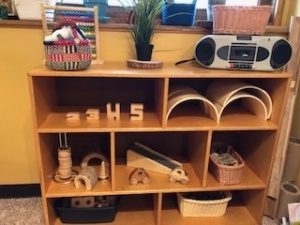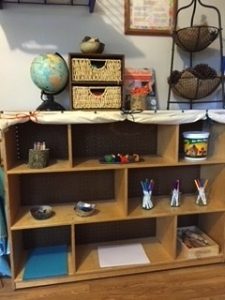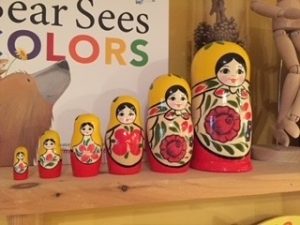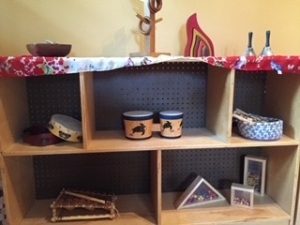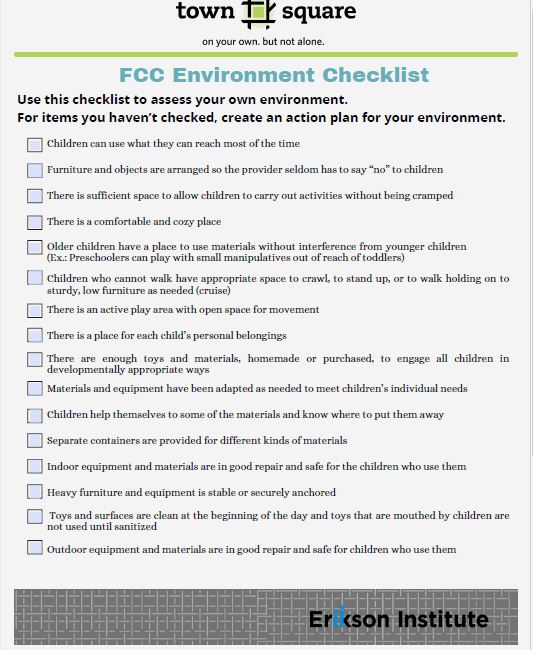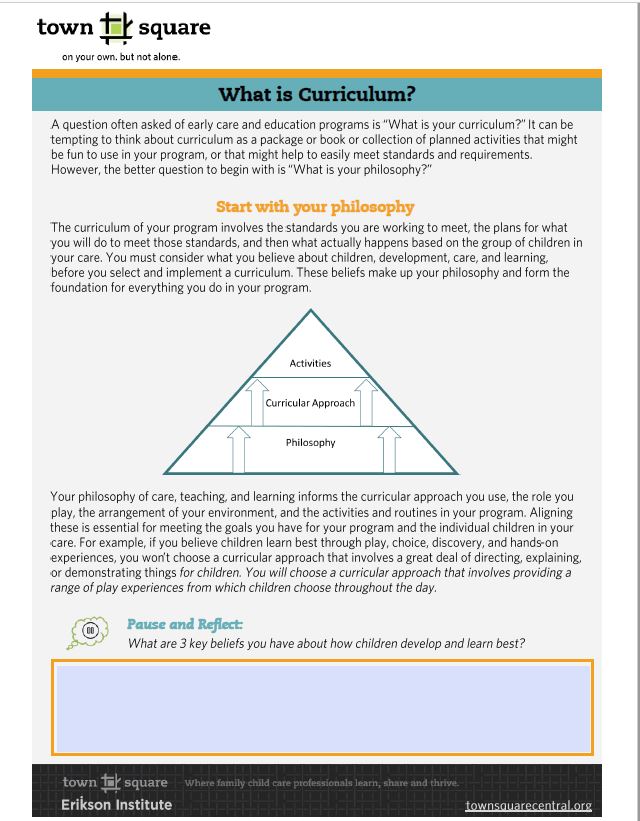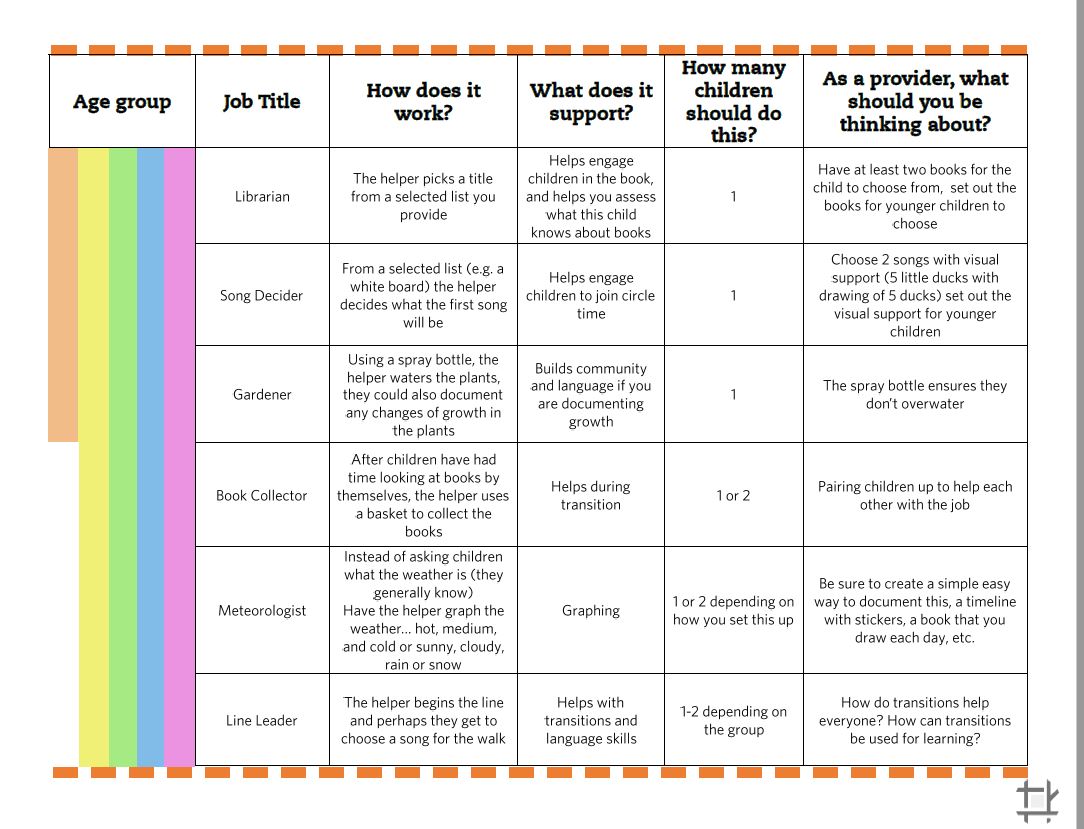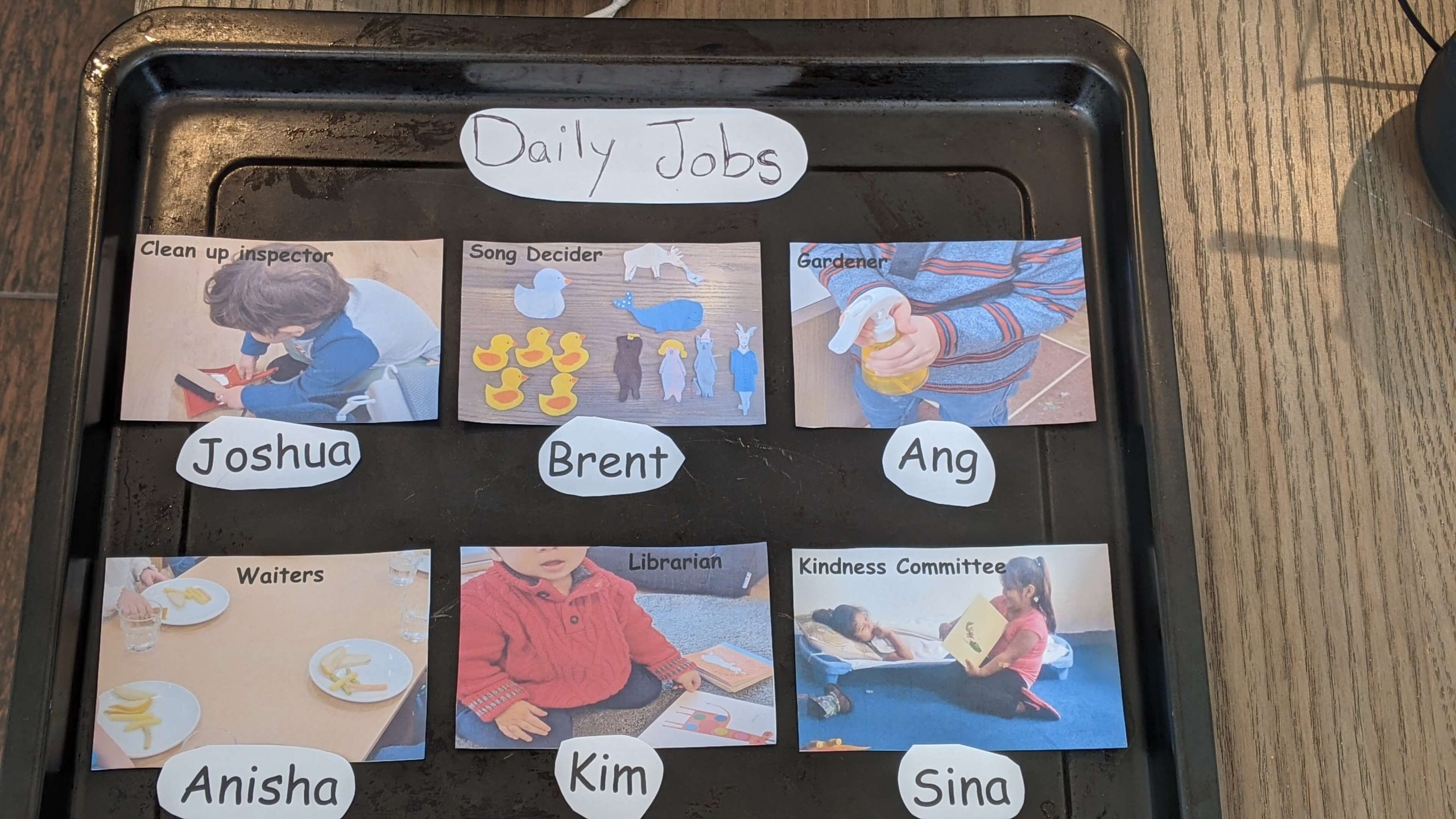One of the joys of family child care is the length of time providers can spend with the children in their care, and the growth that happens in those years. This also means that providers need to remain adaptable, and ready to change their program alongside the children. Communicating with families at enrollment and checking in regularly about when and how long children are sleeping, how often they’re eating, and their state when they get home (overtired? awake until 11?) can help inform routines as children grow.
Of course, in mixed age groups, it’s very likely that there will be children who have seemingly conflicting needs at the same time. How can one provider offer an active preschooler adequate time outdoors, while also feeding infants as they get hungry, and attend to toileting and diapering needs as the pop up?
There are three things to keep in mind to balance it all (most days!):
- Preparation: Communicating with families about young children’s needs, as well as using the provider’s own observations, should inform the construction of the routine. Not only should each child be considered as an individual, but the group as a whole serves as another perspective to consider. Every time the group composition changes, there’s a good chance some part of the routine will as well.
- Equipment: Ideally, there should be spaces indoors and out for both active and quiet play; resting; and eating. Of course, space can be at a premium in any child care setting, so adaptability is key. Can a waterproof box with diapers, wipes, diaper table paper, soap and paper towels live near your garden hose?
- Flexibility: don’t let the clock stress you out– it’s a reference point, not your boss. If the children are contentedly playing, don’t let the clock tell you or them that it’s time to stop! Conversely, if some are clearly tired and hungry, feel free to move lunch and rest time accordingly. While many states have regulations that require infants to be fed and given naps on a highly individualized schedule, it’s okay to let a tired child rest or a hungry child have a cup of milk or other snack outside of scheduled meal times.
For Reflection:
What times of day are the most challenging to meet everyone’s needs?
What would support you in partnering with families around children’s need for routine?
Within the Reggio Emilia approach, and now in many early childhood programs, the environment where children spend their time is typically called the third teacher. The environment helps determines the flow of the day, what children learn and how they interact with one another. Having the right amount, variety, and types of materials in an early childhood classroom will make the day run more smoothly and will be more engaging for the children, thus in turn will make it easier for the teacher.
Knowing the why, when, and how to rotate toys is important and a worthwhile task, based upon information gathered through child observations. Through observations of the children in care, we can determine if, when, and what types of materials need to be rotated in the environment. The provider knows the children in their care very well and soon can see patterns emerge that will help the provider make specific adjustments in the environment.
Let’s consider some of the reasons why we rotate toys in a childcare environment.
A child may have mastered a certain skill and by changing specific materials in the classroom we can help scaffold the child to the next skill level. Children learn through facing appropriate challenges, but it’s important to make the challenge achievable. We don’t want the child to feel frustrated or lose interest. A skilled teacher is able to observe students and notice these small changes and find materials that will spark curiosity and interest. We may want to teach a new skill. Placing new toys and materials in the classroom can help a child learn a new skill, such as sequencing, stacking, or balancing. We may also want to challenge that skill and make it slightly more difficult by adding something new to use. Safety is top priority so make sure that items placed in the environment are safe for all ages of the children in the classroom. This can be challenging in multi age programs but can be overcome with a little planning and thought. A child’s individual interests will also play a part in the items we choose. We know that children will play with things that interest them. Having materials of interest will mean the children will explore and play with things that interest them and that are relatable and familiar to them. Common household items that children are familiar with are good to add when possible.
Now let’s take a look at when we might remove certain materials from the classroom environment. When children have lost interest, aren’t playing with as intended or are mistreating the materials, this is a good time to remove them and find materials that the children are interested in. Intended uses of toys and materials may vary from item to item. I believe that a toy does not necessarily have to be used exclusively for its intended purpose. I believe children should be able to use their imagination and creativity and use items in different ways, not just the way intended from the manufacturer. Items that are distracting and stress inducing should be removed. Some children are more sensitive to certain colors, sounds, and even how much is available in the environment for the children at one time. Remember less is more.
Finally, how we display items in the environment helps convey to the children what is expected of them and where items belong. Neatly placing items on a shelf helps children put things away on their own. Labeling shelves and baskets make clean up a breeze. They can also see and reach what they would like to play with, and this allows for independence. Placing similar items together on the shelf in an aesthetically pleasing way, where children can see them shows we care about our materials and toys, and they deserve a place in the space. Don’t over crowd the environment. Less really is more in childcare. If too many choices are available to children, they don’t play well with any of them. Choose items that interest the children and things they are familiar with and see in their day to day lives. We want these items to be relatable to children and familiar. Children want to use “real” things they see in their everyday lives. If teaching a theme, we may want to choose items that relate to the theme being taught or based upon the current season. Rotating 1-2 things a week and making adjustments as needed is less stressful on children than changing everything at one time.
Creating an organized and inviting environment is not difficult. With a little planning and time, you can create a relaxing and organized childcare space to enjoy for children and teachers alike.
When planning activities for mixed-age groups, there are a number of considerations to make. Keeping all children safe, engaged, and supported takes a lot of practice and skill! Thankfully, there are a number of ways to provide individualized experiences within one activity to meet the needs of all children.
- Safety first: Modify the environment so infants and toddlers cannot access choking hazards that older children may be using. This might involve baby gates or having the older children work on an inaccessible tabletop while infants and toddlers work on a lower surface.
- Plan for complexity: if you are planning a painting activity, have different materials available to accommodate and build on different skill sets. Infants and toddlers can fingerpaint, while preschoolers and school-age children can use brushes of different sizes and experiment with purposeful color mixing.
- Allow for “helpers”: preschoolers and school age children can feel pride and competence when given tasks to help adults– especially to distinguish themselves from the “babies.” Giving older children the responsibility of helping to maintain their own materials (washing paint brushes, putting away blocks, wiping up spills) is beneficial for their development and will help them feel ownership over the space and materials.
- Make a “yes space”: There are going to be times that the older children need more attention or are engaging in an activity too complicated for toddlers. Having a smaller space where the younger children cannot get into the older children’s activities becomes important at these times. While it must be in a space that can be supervised at the same time as the older children, it should be fully child-proofed and stocked with items that will keep the younger children’s interest.
With all of the challenges working with mixed age groups can present, there are so many benefits for the younger children, who get to spend their days with role models, and the older children who get to practice being compassionate and caring friends.
While there are many places to buy curriculum for early childhood programs, the most beneficial learning experiences for children are planned by the people who know them and their abilities and interests.
Starting with children’s interests, and then seeing the skills that can be developed within those interests, is at the heart of a lesson plan. If the most popular toys among the children is the train set, how can that expand through activities that will support their learning and development across domains?
Counting the trains out loud and comparing the length of two or more trains will introduce children to foundational math skills of comparison and number sense.
Adding books about trains to your library and finding some train songs (or adding trains to songs they already know– “The Wheels on the Train”, anyone?) will expose children to new vocabulary and give them opportunities to deepen their understanding of what a train is. Don’t limit yourself to fiction, either– many young children are absolutely fascinated by books with real pictures that explain how the mechanics work.
Painting with train wheels can be a thrill for young children! Running the trains through paint and over paper allows them to see how a wheel moves and understand the cause and effect of paint drying out and no longer transferring to paper, then refreshing the paint and painting smooth lines again.
Of course, trains are only one common interest young children have. These same principles apply, whether they’re exploring spiders, puppets, or mermaids. Noticing what children are learning and using academic skills as the tools that they are to help advance childrens’ ideas and understanding will prepare them to use these skills as they grow.
Academic skills are tools that we want children to have and be able to use. Just like a quizzing a child on how to use a hammer, offering worksheets, and reading books won’t teach that child how to use a hammer, teaching academic skills without opportunities to hold, manipulate, and experiment with them won’t offer children competence and expertise.
Reflection Questions
What common interests are you seeing in the children you work with? What themes are recurring?
What resources can you use to determine the academic skills children can acquire through their play and through interactions with adults?
Early Childhood Education can have a lot of buzzwords and misunderstandings. This “Philosophy Spotlight” series intends to introduce you to the origins of a number of currently used philosophies directly from the writings of their founders and accomplished practitioners, as well as modern practices and ideas associated with these philosophies. Note that many of the philosophies and philosophers we reference in the US are Euro-centric in origin. I will do my best to integrate philosophies of development and learning from a more diverse body of knowledge, for the benefit of all children and providers. You’ll notice a significant amount of overlap between philosophies, as well as some stark differences. Use these articles to consider your own approach to early education, and maybe refine how you see you work and design your program. These are intended to be broad overviews; please see the references if you’d like to learn more about each one!
Origins: After Italy had been destroyed as a fascist power during World War II, there was a movement to rebuild the country in a way that would support its citizens in pursuit of freedom from oppression. The first Reggio Emilia school was built by families seeking to create a new school for their children as they rebuilt their community. They quickly grew into a network of preschools and infant toddler centers through the 1960s and 70s. In 1991, Newsweek called the Diana school, one of Reggio Emilia’s preschools, one of the best schools in the world.
Modern Regulating Bodies/Standards: The term “Reggio Emilia Approach” is trademarked, leading to many programs describing their philosophy as “Reggio Inspired”, although there is no regulating body outside of Italy that controls the use of the term. A school cannot be certified as a Reggio Emilia school, nor can a teacher be a certified Reggio Emilia teacher. There are organizations in the International Network that further the spread of information about the Reggio Emilia approach, but do not serve as regulators.
Theories and Theorists:
Loris Malaguzzi is considered the founder of the Reggio Emilia approach. He was a psychologist trained in pedagogy and had previously co-founded a school for children with disabilities and learning difficulties. While working there, he was approached to collaborate with the new network of preschools and infant-toddler centers.
Values:
Children are active protagonists in their growing processes: Every child can and has the right to create their own experiences as an individual and member of a larger group.
Progettazione/Designing: Education is shaped by the design of environments, participation, and the design of learning situations. It does not happen to the same degree in predesigned programs or curricula that are premade.
The hundred languages: The Hundred Languages of Children are a metaphor for the potential of children and their thinking and creative processes. It is a central value to honor all of children’s forms of self-expression equally.
No way. The hundred is there: A Poem by Loris Malaguzzi (translated by Lella Gandini)
No way. The hundred is there.
The child
is made of one hundred.
The child has
a hundred languages
a hundred hands
a hundred thoughts
a hundred ways of thinking
of playing, of speaking.A hundred always a hundred
ways of listening
of marveling, of loving
a hundred joys
for singing and understanding
a hundred worlds
to discover
a hundred worlds
to invent
a hundred worlds
to dream.The child has
a hundred languages
(and a hundred hundred hundred more)
but they steal ninety-nine.
The school and the culture
separate the head from the body.
They tell the child:
to think without hands
to do without head
to listen and not to speak
to understand without joy
to love and to marvel
only at Easter and at Christmas.They tell the child:
to discover the world already there
and of the hundred
they steal ninety-nine.They tell the child:
that work and play
reality and fantasy
science and imagination
sky and earth
reason and dream
are things
that do not belong together.And thus they tell the child
that the hundred is not there.
The child says:
No way. The hundred is there.
Participation: Children are welcomed to participate in relationships, in the classroom and community. This is to give children the “feeling of solidarity, responsibility, and inclusion, and produce changes and new cultures” (Reggio Children).
Learning as a process of construction, subjective and in groups: Every child constructs their own knowledge, through conversation, research, and discussion.
Educational research: Adults interacting with children should see themselves as researchers and use their documentation as research into children, groups of children, and learning. Educators should be encouraged to continue constructing and reconstructing their knowledge and practices.
Educational documentation: Adults and children take videos, photos, and work samples to document the learning the children are engaging in. These documents are used to provoke discussion and through between educators, between children, and between educators and children together.
Organization: Time, space, and work are all organized to reflect the values of the school and projects.
Environment and spaces: Interior and exterior spaces are all designed and organized to interact with the people in the space, shape learning experiences, and inspire thought and creativity. Care of the environment is critical, and maintaining the aesthetics of the space is intended to create pleasure and joy in the people who use the space.
Formation/Professional growth: Professional growth is the right of individual educators and the whole group. In Reggio Emilia, professional development is part of educators’ working time, and occurs within staff meetings and the larger city, national, and international context.
Evaluation: The schools should be evaluated frequently by their coordinators, educators, community members, and families to ensure that they are meeting the needs of the children and families.
What You Might Observe in a Reggio Inspired Program:
Many Reggio Emilia inspired programs place a heavy emphasis on the arts, particularly visual representations and planning, along with guided exploration of visual arts materials. There will likely be documentation of children’s work hanging up for children and adults. Oftentimes, children in Reggio Inspired programs use more “loose parts” than traditional toys. As part of the Reggio value of designing, children are offered “provocations” which are curated sets of materials designed for children to explore and experiment with to provoke their thinking and extend their interests. Provocations can look like a tray with small balls and ramps; unwrapped crayons, leaves, and thin paper for printmaking; boxes, tape, and crayons to create with; or anything else that children might use to carry out experiments on their own interests.
Influence on Modern ECE Programs at Large:
Many programs use pedagogical documentation to show families what children have been participating in. Loose parts play is also becoming much more widespread in early childhood programs.
Questions for Your Reflection:
When you think of yourself as not just an educator, but a researcher of children, how does that influence your perspective on your work? What would you do differently as a researcher than as a teacher?
How does documentation differ from any other display of children’s work?
When you think about your environment, does it work with or against your program’s mission and vision? What would you like to change?
Early Childhood Education can have a lot of buzzwords and misunderstandings. This “Philosophy Spotlight” series intends to introduce you to the origins of a number of currently used philosophies directly from the writings of their founders and accomplished practitioners, as well as modern practices and ideas associated with these philosophies. Note that many of the philosophies and philosophers we reference in the US are Euro-centric in origin. I will do my best to integrate philosophies of development and learning from a more diverse body of knowledge, for the benefit of all children and providers. You’ll notice a significant amount of overlap between philosophies, as well as some stark differences. Use these articles to consider your own approach to early education, and maybe refine how you see you work and design your program. These are intended to be broad overviews; please see the references if you’d like to learn more about each one!
Origins: Dr. Montessori was a physician who worked with disabled children, who were at the time isolated in asylums and assumed to be incapable of anything worthwhile. She believed that these children had more potential to be educated, and so she set about creating a method of education (pedagogy) to be used specifically for children with disabilities, with her first school opening in 1898. She quickly realized that typically developing children could benefit from her ideas as well.
Modern Regulating Bodies/Standards: the American Montessori Society offers an accreditation program for Montessori schools, but AMS accreditation is not required for a program to call itself Montessori or use its practices.
Theories and Theorists: “The school must permit the free, natural manifestations of the child” – Maria Montessori
Young children’s options for activities are known as “work,” to give appropriate value to their actions. In modern use, preschool children’s work is separated into the areas of practical life, sensorial, language, mathematics, biology, geography, and fine arts.
Values:
Independence: children in Montessori classrooms are encouraged to work independently, from taking their materials off of the shelf, to competing the work, to placing it back on the shelf the way they found it. They are also taught to prepare and serve their own snacks and clean up after themselves.
Teachers are known as “guides” to highlight their role as a facilitator rather than director.
Children should have freedom to determine what they will work on and for how long.
Materials and environment should be beautiful and convey their importance to children.
What You Might Observe in a Montessori Classroom:
Montessori Materials: While the term “Montessori” is used to sell many items now, the Montessori materials are specific creations by Dr. Montessori and her predecessor, Dr. Édouard Séguin. These include items like The Pink Tower, the Hundred Board, and sandpaper letters. There may be only one way to use the materials. For example, a child may or may not be allowed to build a structure other than the Pink Tower with the Pink Tower blocks, depending on the program.
Like the materials are taught to children in sequence with predictable outcomes, art is taught to young children with discrete skills. Children learn about the colors and their relationship to each other on a color wheel; how to use scissors and glue; hole punching; taking rubbings; and many other fine art skills. Dr. Montessori did not write much about how art was to be used in the classroom, so her followers have interpreted this in a range of ways. In general, you will see art materials displayed in lessons, the same way you would see other materials displayed for children’s use.
Mixed-age grouping: Montessori classrooms typically have children of a variety of ages in them. Often you will find a toddler class for children from approximately 18 months until 30 months. After toddler they’ll move to pre-primary, for three- to six-year-olds. The idea behind this is to allow maximum flexibility for children to develop their abilities as they are ready, rather than on a closed schedule tied to chronological age.
Books (and all materials) emphasize reality. Because young children have trouble distinguishing fantasy from reality, Dr. Montessori believed that the books available to them should be rooted in reality, whether those are purely non-fiction or fictional books about the real world. In a traditional Montessori program, for example, you’re unlikely to see any books about talking animals or imaginary creatures. In general, fantasy play is discouraged, including dressing up in costumes. This does depend somewhat on the individual program and implementation.
Influence on Modern ECE Programs at Large:
Dr. Montessori is the primary reason so many early childhood environments have child-sized furniture. She was also one of the early pioneers of approaches that place emphasis on children being able to touch and manipulate the things they’re learning about. In Dr. Montessori’s Own Handbook, she writes about multicolored carpet squares for children to use for seating– a practice many early childhood spaces use today.
Questions for Your Reflection:
How do you see your role in the with children as compared to a classical Montessori guide?
How are materials used in your program?
What types of materials are available for children in your program?
What role do the children take in the maintenance and preparation of their environment?
When and how do you use explicit instruction to guide children? When and how do they have the opportunity to self-correct or use self-correcting materials?
Early Childhood Education can have a lot of buzzwords and misunderstandings. This “Philosophy Spotlight” series intends to introduce you to the origins of a number of currently used philosophies directly from the writings of their founders and accomplished practitioners, as well as modern practices and ideas associated with these philosophies. Note that many of the philosophies and philosophers we reference in the US are Euro-centric in origin. I will do my best to integrate philosophies of development and learning from a more diverse body of knowledge, for the benefit of all children and providers. You’ll notice a significant amount of overlap between philosophies, as well as some stark differences. Use these articles to consider your own approach to early education, and maybe refine how you see you work and design your program. These are intended to be broad overviews; please see the references if you’d like to learn more about each one!
Modern Regulating Bodies/Standards:
Association of Waldorf Schools of North America offers accreditation for Waldorf schools through High School, and WECAN (Waldorf Early Childhood Assocation of North America) offers membership and allows participating organizations, including Family Child Care Homes, to use the term Waldorf.
Origins, Theories and Theorists:
The first Waldorf school was built in the Waldorf Astoria cigarette factory in Stuttgart, Germany in 1919. The factory owner asked Rudolf Steiner to start a school for his employees’ children after Steiner gave a speech there about social renewal in the wake of World War I. Steiner’s school
Steiner created Anthroposophy, a spiritual belief that aligns with Christianity but is not explicitly Christian. Waldorf schools are still influenced by anthroposophy, but the majority would not consider themselves religious.
“We must delay as long as possible the giving of mental concepts in purely intellectual form…man should fully awaken later in life, but the child must be allowed to remain as long as possible in the peaceful, dreamlike state of pictorial imagination of the early years. For if we allow the organism to grow strong in this way, he will develop in later life the intellectuality needed in the world today.” Rudolf Steiner, 1923
The Waldorf philosophy comes with a specific view of child development, spaced out in three phases of seven years each. Early childhood is thought of as the first seven years of life, and is a time for children to engage with physical materials and explore the world as well as their imagination. It is considered too early for intellectual or academic work.
Values:
Creativity and fantasy– Steiner believed that young children live in a fantasy world, and thus should hear stories that continue to encourage their imagination, so as to develop their intuition. He also believed that fairy tales and other fantastical stories are internalized by children as allegories and accessed later as part of their subconscious spiritual and moral development.
Being outdoors and spending time in nature, observing the changes of the seasons and passing of time through ritual.
Limiting early academics. Children in Waldorf schools do not partake in any formal literacy instruction until first grade, and it is believed that academic expectations are a hindrance to a young child’s development.
Little to no use of electronics/technology, including recorded music, at least until upper grades (mostly high school).
Steiner believed that “the human being is a music being,” and placed great importance on children and adults alike creating music.
“Educating the head, the heart, and the hands” was how Steiner phrased his idea for holistic education. This could also be phrased as thinking, feeling, and doing, and represents educating the whole person. Young children in particular are primarily “hands”– they learn through doing, and active physical exploration.
Great emphasis on creative expression; Waldorf schools incorporate arts and music throughout the curriculum.
What You Might Observe in a Waldorf Early Childhood Program:
Practical life activities similar to Montessori; children are encouraged to help cook and serve food, as is developmentally appropriate.
A lot of art and music. Waldorf teachers and children sing together every day as part of their curriculum, and painting and drawing are valued highly, as are crafts such as felting and knitting, even for young children.
Puppets! Puppet Plays are a significant tradition in Waldorf education, intended to teach children the value of storytelling in different ways. These puppets are often very simple and frequently handmade from knotted cloths or felted wool.
Nature tables: low tables with sticks, leaves, stones, flowers, and other items brought inside from the natural world. The children seek out these objects as symbols of seasonal change; dry brown leaves in the fall are replaced with empty shed twigs in the winter, and then fresh green leaves in the spring.
Influence on Modern ECE Programs:
Many modern early childhood programs place a strong emphasis on story telling with young children. An increasing number are bringing in natural artifacts in a way similar to a nature table.
Questions for Your Reflection:
What in your practice might align with Waldorf values?
How does your view of child development agree or disagree with Steiner?
What ideas in Steiner’s statements or in Waldorf schools as they are today challenge or align with beliefs you hold about young children?
As you think about your environment, you may find this checklist useful for self-assessing quality in your environment and making an improvement plan. The checklist is based on the NAFCC Accreditation Observation Checklist.
A large part of running a care and education program is having a curriculum, but what exactly is a curriculum? This Town square-created resource dives deep into exploring the foundation of a curriculum and guides you in reflecting on your current practice.
Daily Jobs are an excellent way to build a community in your program and develop a sense of purpose in children. This Town square created resource guides in understanding the importance of jobs, how they can be beneficial in the program’s daily schedule, and how to best utilize them for your specific children.
After selecting the jobs that best fit your program, one way to create a job chart is to use a baking sheet and magnets. Take pictures or have children draw the jobs, then print or have children write their name (if possible laminate them). Attach a magnet to the names and the jobs. Alternatively, you can use a felt board and velcro. Make sure that the Job chart is visible daily for children, and they can have access to it if they need to look at their job for the day.

